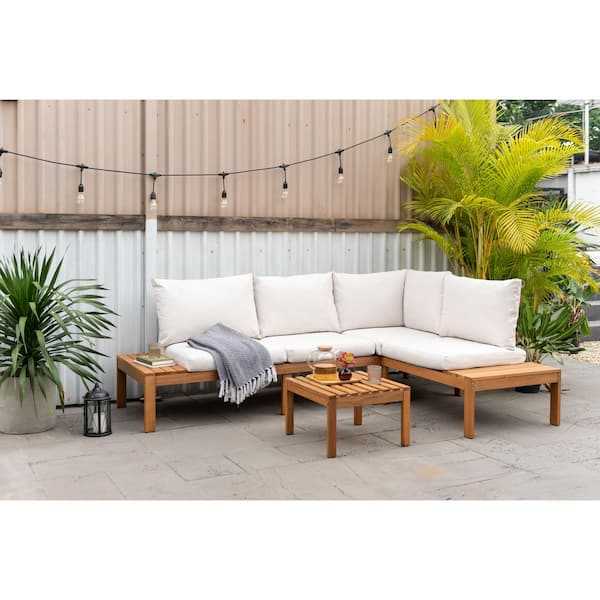- The Importance of Molochai Care
- What is Molochai?
- Benefits of Molochai Care
- Molochai Care Tips
- Conclusion
- Molochai Care Tips for Beginners
- 1. Choosing the Right Tank
- 2. Providing Proper Lighting
- 3. Maintaining Optimal Temperature
- 4. Providing a Balanced Diet
- 5. Maintaining Humidity Levels
- 6. Creating a Suitable Habitat
- 7. Regular Maintenance and Observation
- 8. Avoiding Stress
- 9. Educating Yourself
- Common Types of Molochai
- Choosing the Right Molochai for Your Home
- Introduction
- Assess Your Needs
- Research and Referrals
- Interview and Skills Assessment
- Cost and Contract Agreement
- Final Decision
- Conclusion
- Molochai Care: Watering and Sunlight Requirements
- Watering
- Sunlight Requirements
- Molochai Pest Control: How to Keep Your Plants Healthy
- Introduction
- Common Pests
- Preventive Measures
- Conclusion
- Propagating Molochai: A Step-by-Step Guide
- 1. Gathering the Needed Supplies
- 2. Preparing the Cuttings
- 3. Potting the Cuttings
- 4. Providing Adequate Conditions
- 5. Caring for the Cuttings
- 6. Enjoying Your Propagated Molochai
- Conclusion
- Molochai Care Mistakes to Avoid
- 1. Overfeeding
- 2. Inadequate heating
- 3. Incorrect humidity levels
- 4. Neglecting proper lighting
- 5. Lack of enrichment
- 6. Improper handling
- 7. Failure to provide a suitable enclosure
- 8. Ignoring signs of illness
- Q&A:
- What is Molochai?
- How do I care for Molochai at home?
- What are the different types of Molochai?
- Can Molochai be grown outdoors?
- What are the benefits of having Molochai at home?
- How often does Molochai need to be watered?
- Video: Types of Care Homes: What Are They And What Do Care Workers Do?
Molochai, also known as Devil’s fork or Snake finger, is a popular plant that is often found in home gardens and indoor spaces. It is loved for its unique finger-like leaves and low-maintenance nature, making it a favorite for those who do not have a green thumb. In this article, we will explore the care tips for Molochai at home and discuss the different types of this intriguing plant.
To care for Molochai at home, you need to provide it with the right conditions to thrive. This plant prefers bright, indirect light and can tolerate some direct sunlight, especially in the morning or evening. However, intense afternoon sun should be avoided as it can scorch the leaves. Molochai also prefers well-draining soil that is moist but not waterlogged. Allow the top few inches of soil to dry out before watering, and make sure to water thoroughly, allowing excess water to drain out.
In terms of temperature, Molochai is a tropical plant and does well in temperatures between 65-75°F (18-24°C). It is essential to keep it away from cold drafts or extreme temperature fluctuations, as this can cause stress and lead to leaf drop. Regular fertilization with a balanced houseplant fertilizer during the growing season will also help promote healthy growth and vibrant foliage.
Molochai comes in several different types, each with its own distinct characteristics. The most common type is Molochai ciliaris, known for its slender, green finger-like leaves with serrated edges. Another popular variety is Molochai python, named for its resemblance to a snake’s skin with its green and yellow patterned leaves. There are also variegated varieties, such as Molochai variegata, which feature leaves with white or creamy yellow stripes.
In conclusion, Molochai is a fascinating plant that can bring a unique touch to any home or indoor space. By following the care tips mentioned above and choosing the right type for your preference, you can enjoy the beauty of Molochai and its distinctive finger-like leaves for years to come.
The Importance of Molochai Care

What is Molochai?
Molochai is a tropical plant native to Southeast Asia that is commonly grown as a houseplant. It is known for its striking foliage, which features large, deep green leaves with dramatic, almost black veins.
Benefits of Molochai Care
Caring for Molochai plants is important for several reasons:
- Aesthetic Appeal: Molochai plants have a unique and visually appealing appearance, making them a popular choice for indoor decoration.
- Air Purification: Like many other houseplants, Molochai plants are effective at purifying the air by filtering out toxins and releasing clean oxygen. This can improve the overall air quality in your home and promote a healthier environment.
- Mental Well-being: Taking care of plants, including Molochai, has been shown to have a positive impact on mental health. It can reduce stress, improve mood, and provide a sense of purpose and fulfillment.
- Connection with Nature: Bringing plants indoors, such as Molochai, allows you to connect with nature even if you live in an urban environment. This connection can provide a sense of calmness and tranquility.
- Learning and Responsibility: Caring for a living plant, like Molochai, can teach responsibility and provide an opportunity for personal growth. It requires regular maintenance, such as watering, fertilizing, and monitoring for pests, which can help develop a sense of accountability.
Molochai Care Tips

Here are some essential care tips for Molochai plants:
- Light: Molochai plants thrive in bright, indirect light. Place them near a window where they can receive plenty of natural light, but avoid direct sunlight, as it can scorch their leaves.
- Watering: Keep the soil moist but not soggy. Water the plant when the top inch of soil feels dry to the touch. Ensure proper drainage to prevent waterlogging, which can lead to root rot.
- Humidity: Molochai plants prefer high humidity. Mist the leaves occasionally or place the plant on a tray filled with pebbles and water to increase humidity around the plant.
- Temperature: Molochai plants thrive in warm temperatures between 65°F and 85°F (18°C and 29°C). Avoid exposing them to drafts or extreme temperature fluctuations.
- Fertilizer: Feed Molochai plants with a balanced, water-soluble fertilizer every 2-4 weeks during the growing season (spring and summer). Follow the instructions on the fertilizer packaging for the proper dosage.
- Pest Control: Monitor the plant regularly for common pests such as spider mites or aphids. If infestation occurs, treat the plant with an appropriate pesticide or insecticidal soap.
Conclusion
Molochai plants are not only aesthetically pleasing but also offer numerous benefits for both physical and mental well-being. By providing proper care, you can enjoy the beauty of Molochai while reaping the rewards of a healthier home environment and personal growth.
Molochai Care Tips for Beginners
1. Choosing the Right Tank
When setting up a Molochai tank, it’s essential to choose the right size and type of tank. Molochai requires a tank that is at least 10 gallons in size, as they need plenty of space to move around and explore. Additionally, it’s essential to choose a tank with a secure lid to prevent any escapes.
2. Providing Proper Lighting
Molochai requires access to UVB lighting to help them metabolize calcium and maintain proper bone health. It’s crucial to provide a UVB lamp designed for reptiles in their tank. The light should be on for 10-12 hours a day, mimicking their natural day-night cycle.
3. Maintaining Optimal Temperature

Molochai are cold-blooded creatures and rely on external heat sources to maintain their body temperature. The tank should have a basking spot with a temperature of around 90-95°F (32-35°C) and a cooler side with a temperature around 75-80°F (24-27°C). Using heat lamps or heat mats can help achieve the ideal temperature gradient.
4. Providing a Balanced Diet
Molochai are insectivores and require a diet primarily consisting of live insects. The diet should be varied and include small insects like crickets, mealworms, and calcium-dusted waxworms. Avoid feeding them wild-caught insects as they may carry parasites or pesticides. It’s also essential to supplement their diet with calcium and vitamin D3 to prevent nutritional deficiencies.
5. Maintaining Humidity Levels
Molochai are native to arid regions, so it’s crucial to maintain low humidity levels in their tank. Aim for a humidity level between 20-30%. To achieve this, you can provide a shallow water dish for them to drink from and occasionally mist the tank with water.
6. Creating a Suitable Habitat
It’s important to create a suitable habitat for your Molochai. Provide a substrate that allows them to dig and burrow, such as a mixture of sand and soil. Add hiding spots like rocks and branches for them to feel secure. You can also create a shallow pool of water for them to soak in.
7. Regular Maintenance and Observation
Regularly clean and disinfect the tank to maintain a hygienic environment for your Molochai. Keep an eye on their behavior, eating habits, and overall health. Any sudden changes could indicate a problem, and it’s essential to seek veterinary care if needed.
8. Avoiding Stress
Molochai are sensitive creatures and can easily become stressed. Avoid handling them too often, as it can cause stress and potential injury to them. Keep noise levels in the room low and provide them with a quiet and calm environment to thrive.
9. Educating Yourself
Continuous learning and research are crucial for providing the best care for your Molochai. Stay updated on the latest information, consult reptile care guides, and join online communities to connect with other Molochai owners and experts.
By following these Molochai care tips, you can provide a healthy and fulfilling life for your pet. Remember, proper care and attention are essential in ensuring their well-being.
Common Types of Molochai
Molochai is a popular choice for at-home care for its versatility and numerous benefits. Here are some common types of Molochai:
- Baby Molochai
- Adult Molochai
- Rescue Molochai
- Molochai with Special Needs
- Domesticated Molochai
Baby Molochai refers to the youngest individuals of the subspecies. They require specialized care due to their delicate nature and need for frequent feeding and cleaning. Baby Molochai are often kept in small enclosures with regulated temperature and humidity levels to ensure their well-being.
Adult Molochai are fully grown individuals that require less intensive care compared to babies. These Molochai have a more stable temperament and are generally easier to handle. They are commonly kept in larger enclosures with ample space for movement and exercise. Regular feeding, cleaning, and social interaction are still necessary for their overall health.
Rescue Molochai are individuals that have been previously owned but have been given up or rescued due to various reasons. These Molochai can have unique needs and may require additional care and attention. It is important to provide a safe and comfortable environment for them to heal and adjust to their new surroundings.
Some Molochai may have special needs or health conditions that require specific care. They may have physical disabilities, dietary restrictions, or behavioral issues that need to be addressed. It is crucial to work closely with a veterinarian or reptile specialist to provide the necessary care and accommodations for these Molochai.
Domesticated Molochai are individuals that have been bred in captivity for generations. They are often more docile and easier to handle compared to their wild counterparts. Domesticated Molochai are a popular choice for first-time Molochai owners due to their familiarity with humans and their increased tolerance for captivity.
Overall, understanding the different types of Molochai and their specific care requirements is crucial for providing optimal care and ensuring their well-being in a home environment.
Choosing the Right Molochai for Your Home
Introduction
When it comes to caring for a loved one at home, choosing the right Molochai is crucial. Molochai, also known as caregivers, play a significant role in providing assistance and support to individuals who need help with daily activities. This article will guide you through the process of choosing the right Molochai for your home.
Assess Your Needs
Before selecting a Molochai, it’s important to assess your needs and the specific requirements of your loved one. Consider the following factors:
- The level of care needed: Determine the type of assistance your loved one requires, such as personal care, medical support, or companionship.
- Health condition: Take into account any specific health conditions or medical needs that require specialized caregiving skills.
- Personality fit: Consider the personality and preferences of your loved one to find a Molochai who can provide a comfortable and compatible environment.
Research and Referrals
Conduct thorough research and seek referrals from trusted sources to find potential Molochai candidates. Consider the following sources:
- Word-of-mouth recommendations: Ask friends, family, and healthcare professionals for recommendations based on their personal experiences.
- Online platforms: Utilize online platforms that connect caregivers with families, read reviews, and compare profiles.
- Professional agencies: Contact home care agencies that specialize in providing qualified Molochai and inquire about their screening and training processes.
Interview and Skills Assessment
Once you have identified potential Molochai candidates, it’s essential to conduct interviews and assess their skills. Use the following guidelines during the process:
- Ask about their experience in caregiving and their familiarity with your loved one’s specific needs.
- Inquire about their availability and flexibility in accommodating your preferred schedule.
- Discuss their communication skills, as clear and effective communication is vital in caregiving.
- Request references and follow up with them to gain insights into the Molochai’s reliability and professionalism.
- Consider conducting a skills assessment or trial period to evaluate the Molochai’s ability to handle tasks and adapt to the home environment.
Cost and Contract Agreement
Ensure that you fully understand the costs associated with hiring a Molochai and any contractual agreements before making a final decision:
- Discuss the Molochai’s hourly rates and fees for additional services or overtime.
- Clarify the payment schedule and any cancellation policies.
- Review the contract thoroughly, addressing important details such as vacation time, sick leave, and termination procedures.
Final Decision
After considering all the factors mentioned above, take the time to reflect and make a final decision. Trust your instincts and choose the Molochai who you believe will provide the best care and support for your loved one.
Conclusion
Choosing the right Molochai for your home is a crucial step in ensuring the well-being and comfort of your loved one. By assessing your needs, conducting thorough research, interviewing candidates, and finalizing the necessary agreements, you can find a Molochai that will provide the high-quality care your loved one deserves.
Molochai Care: Watering and Sunlight Requirements
Watering

Proper watering is essential for Molochai plants to thrive. Here are some guidelines to keep in mind when watering your Molochai:
- Frequency: Molochai plants should be watered thoroughly, but be careful not to overwater. Watering once or twice a week during the growing season is usually sufficient.
- Soil Moisture: Molochai plants prefer moist but well-draining soil. Allow the soil to dry slightly between waterings to prevent root rot.
- Watering Method: Water the Molochai plant at the base, avoiding getting the leaves wet. This prevents fungal diseases and keeps the plant healthier.
Sunlight Requirements
Molochai plants have specific sunlight requirements to ensure their proper growth and development. Consider the following factors regarding sunlight when caring for your Molochai:
- Light Intensity: Molochai plants need bright, indirect sunlight. They thrive in a location with moderate light intensity.
- Duration: Provide Molochai plants with 6-8 hours of sunlight per day. However, they should be protected from direct afternoon sun, which can scorch their leaves.
- Light Exposure: Rotate the Molochai plant regularly to ensure all sides receive adequate light. This prevents the plant from growing lopsided or leaning towards a certain direction.
By following these watering and sunlight guidelines, you can ensure that your Molochai plant remains healthy and vibrant.
Molochai Pest Control: How to Keep Your Plants Healthy
Introduction
Molochai is a popular houseplant that brings a touch of nature to your home. However, like any other plant, Molochai can be susceptible to pests. In this guide, we will explore different pests that can affect Molochai and how to keep your plants healthy and pest-free.
Common Pests
1. Mealybugs – Mealybugs are small insects that appear as white, cotton-like clusters on the leaves and stems of Molochai. They suck sap from the plant, causing yellowing of leaves and stunted growth.
- Control: To get rid of mealybugs, you can use a cotton swab dipped in alcohol to remove them manually. Neem oil or insecticidal soap can also be effective in controlling infestations.
2. Spider Mites – Spider mites are tiny pests that spin webbing on the plant, mainly on the undersides of the leaves. They feed on the sap, causing yellow stippling and defoliation.
- Control: To control spider mites, regularly mist the plant with water to increase humidity. In severe cases, apply insecticidal soap or neem oil to eliminate the pests.
3. Scale Insects – Scale insects appear as small, immobile bumps on the stems and leaves of Molochai. They feed on the sap, causing yellowing, leaf drop, and reduced plant vigor.
- Control: Control scale insects by using a cotton swab dipped in rubbing alcohol to remove them manually. You can also apply neem oil or insecticidal soap to control infestations.
Preventive Measures
1. Proper Plant Care – Maintain the overall health of your Molochai by providing it with proper care. This includes watering the plant adequately, ensuring it receives appropriate sunlight, and fertilizing it regularly.
2. Regular Inspections – Regularly inspect your Molochai for any signs of pests or disease. Early detection can help prevent the spread of infestations and allow for quick intervention.
3. Isolate Infected Plants – If you notice signs of pests on your Molochai, isolate the infected plant from other healthy plants to prevent the pests from spreading.
4. Cleanliness – Keep your plant’s environment clean and free from debris. Remove fallen leaves and clean the surrounding area to eliminate potential hiding places for pests.
Conclusion
By following these pest control methods and preventive measures, you can keep your Molochai plants healthy and beautiful. Regular inspections and timely intervention will help you catch any pest infestations early and keep your plants thriving.
Propagating Molochai: A Step-by-Step Guide
1. Gathering the Needed Supplies
Before you start propagating Molochai, make sure you have the following supplies:
- Healthy Molochai plant
- Sharp pruning shears or scissors
- Small pots or containers
- Well-draining soil mix
- Rooting hormone (optional)
- Misting bottle
- Clear plastic bag or propagation dome
- Warm, bright location for the cuttings
2. Preparing the Cuttings
Take a healthy Molochai plant and carefully select a stem or branch for propagation. Use sharp pruning shears or scissors to make a clean cut just below a node, which is where the leaves attach to the stem.
If desired, you can dip the cut end in rooting hormone to promote faster root growth.
3. Potting the Cuttings
Fill small pots or containers with a well-draining soil mix. Make a small hole in the soil using your finger or a pencil, and gently insert the cutting into the hole. Firmly press the soil around the stem to hold it in place.
4. Providing Adequate Conditions
Place the potted cuttings in a warm, bright location. Avoid direct sunlight, which can scorch the delicate cuttings. Mist the cuttings with water to keep the soil moist, but not waterlogged.
If using a clear plastic bag or propagation dome, place it over the potted cuttings to create a humid environment. This will help prevent moisture loss and promote root development.
5. Caring for the Cuttings

Monitor the moisture levels in the soil and mist the cuttings regularly to keep the humidity high. Avoid overwatering, as this can lead to root rot.
After a few weeks, you should start to see new growth and roots forming. Once the cuttings have established a healthy root system, they can be transferred to larger pots or planted in the ground.
6. Enjoying Your Propagated Molochai
Once your propagated Molochai plants have grown and matured, you can enjoy their unique appearance and care for them using the same techniques as with the parent plant. Remember to provide them with the right amount of light, water, and nutrients to ensure their continued health and beauty.
Conclusion
Propagating Molochai can be a rewarding experience that allows you to expand your collection of these beautiful plants. By following these steps and providing the right conditions, you can successfully propagate Molochai and enjoy their stunning foliage in your home or garden.
Molochai Care Mistakes to Avoid

1. Overfeeding
One of the common mistakes in caring for a Molochai is overfeeding. These reptiles have a slow metabolism and can easily become obese if they are given too much food. It is important to research the appropriate diet for Molochai and provide them with the right amount of food to maintain a healthy weight.
2. Inadequate heating
Molochai are native to arid regions and require a warm environment to thrive. It is important to provide them with an appropriate heat source, such as a heat lamp or heating pad, to maintain the correct temperature in their enclosure. Failure to provide adequate heating can lead to health issues and a decreased lifespan.
3. Incorrect humidity levels
Molochai need a specific level of humidity in their environment to stay healthy. Too much humidity can lead to respiratory problems, while too little can cause shedding issues. It is important to monitor and maintain the humidity levels in their enclosure by providing a proper substrate and regular misting.
4. Neglecting proper lighting
Molochai require access to UVB lighting to properly metabolize calcium and maintain bone health. Without adequate UVB exposure, they can develop metabolic bone disease, which can be life-threatening. It is important to provide them with a UVB light source and ensure they have access to it for a specific amount of time each day.
5. Lack of enrichment

Molochai are intelligent animals and need mental stimulation to stay healthy and happy. Providing them with appropriate hiding spots, climbing surfaces, and toys can help prevent boredom and reduce stress. Neglecting to provide enrichment can lead to behavioral issues and a decreased quality of life for your pet.
6. Improper handling
Molochai can be delicate creatures and may not tolerate excessive handling. Improper handling techniques, such as grabbing or squeezing, can cause stress and injury to the animal. It is important to learn proper handling techniques and approach your Molochai with gentleness and respect.
7. Failure to provide a suitable enclosure
Molochai require a spacious and well-ventilated enclosure to thrive. It is important to provide them with an enclosure that is appropriately sized for their needs and allows for adequate airflow. Failure to provide a suitable enclosure can lead to stress, respiratory issues, and overall poor health.
8. Ignoring signs of illness
Molochai are masters at hiding signs of illness, so it is essential to closely monitor their behavior and appearance for any signs of health issues. If you notice any changes in appetite, behavior, or physical appearance, it is important to seek veterinary care promptly. Ignoring signs of illness can result in further complications and a decline in the Molochai’s health.
Q&A:
What is Molochai?
Molochai is a tropical plant with vibrant green leaves that is native to Asia.
How do I care for Molochai at home?
To care for Molochai at home, you should place it in bright, indirect sunlight, water it regularly, and keep the humidity levels high.
What are the different types of Molochai?
There are several different types of Molochai, including Molochai Indica, Molochai Variegata, and Molochai Hasta.
Can Molochai be grown outdoors?
Yes, Molochai can be grown outdoors in warm, tropical climates. However, it is important to protect it from direct sunlight and strong winds.
What are the benefits of having Molochai at home?
Molochai has several benefits, including improving indoor air quality, reducing stress, and adding a touch of tropical beauty to your home.
How often does Molochai need to be watered?
Molochai should be watered regularly, but be careful not to over-water it as this can lead to root rot. It is best to keep the soil slightly moist, but not waterlogged.
Video:
Types of Care Homes: What Are They And What Do Care Workers Do?







